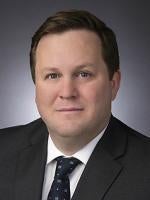Recent developments in the energy sector indicate that blockchain technology is being embraced to address a range of issues including network security and improved integration of renewable generation and demand response resources. This emerging technology continues to have the potential to become a disrupter in the energy industry.
Recently the U.S. Department of Energy (“DOE”) awarded Xage Security, Inc. (“Xage”) a development grant to demonstrate how its blockchain security fabric could protect the U.S. energy infrastructure. As newer technologies have been utilized in utility networks, legacy systems increasingly face cybersecurity risks for which they were not initially designed, and utilities increasingly have been the target of cyber-attacks. Xage proposes to use blockchain and distributed ledger technology to enhance utility system security. The fabric would consist of nodes running across the utility network that would communicate with each other in a chain using hashes. When someone attempts to access the system, each node independently determines whether access should be permitted using its copy of the network’s security policy. If enough of the nodes allow access (based on the program parameters), access will be granted. The use of fingerprint-like hashes and a decentralized network substantially (if not completely) protects the system from would-be hackers who would falsify inputs and tamper with critical code. The DOE grant serves as a clear indication that blockchain technology may play an important role in the protection of utility assets going forward.
Blockchain is also gaining traction in worldwide energy markets supporting clean energy. In June, the Energy Web Foundation (“EWF”) launched its Energy Web Chain (“EW Chain”), a blockchain platform specifically created for the energy industry. EW Chain is intended to initially support applications associated with electric vehicles, renewable energy credits, and peer-to-peer energy trading. EWF also is preparing to migrate other applications into EW Chain that would allow customers to track the source of the energy they consume (i.e., energy from renewable sources) and better integrate distributed, small-scale energy and demand response resources into the grid. Currently, EW Chain comprises ten validator nodes hosted by companies including Centrica, Duke Energy, and E.ON.
As the energy sector continues to expand the use of blockchain technology to address issues associated with network security, demand response, distributed generation, and integration of renewables onto the grid, users and utilities alike should remain focused on state and federal regulatory requirements.
*Thomas Carr is a summer associate in Sheppard Mullins Washington, D.C. office.




 />i
/>i
